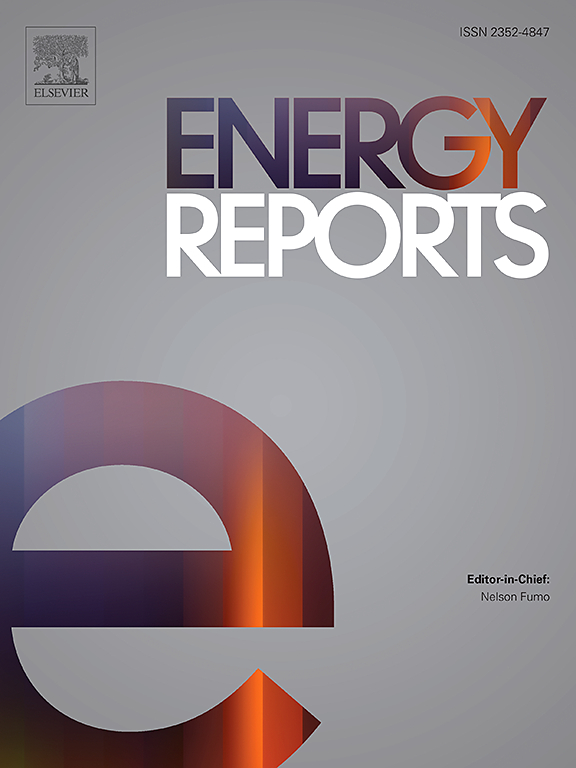具有时变碳排放因子和逐步碳价的区域互联高可再生能源渗透率系统分布协调规划
IF 5.1
3区 工程技术
Q2 ENERGY & FUELS
引用次数: 0
摘要
碳排放因子(CEF)是一种有效的碳量化工具,通常用于评估碳交易成本和促进碳减排。然而,在目前的研究实践中,平均碳排放因子(ACEF)提供了一种与时间无关的静态核算方法。这可能导致对碳排放的不准确评估,并限制碳减排的能力。针对时变碳排放因子(TCEFs)和逐步碳价(SCP)的区域互联高可再生能源渗透率系统,提出了一种分布式协同规划模型。该时变CEF模型动态捕捉不同单位的产出占总能耗的比例,以准确计算碳排放。然后,利用TCEFs和SCP之间的协同作用,优化每台发电机和储能系统(ESS),促进可再生能源的持续整合,并促进碳排放的减缓。最后,采用分布式协同算法,通过区域互联,提高运营效率和资源利用率,最终达到碳减排效果。仿真结果证明了该方法在提高低碳性能和经济效益方面的有效性。本文章由计算机程序翻译,如有差异,请以英文原文为准。
A distributionally coordinated planning in regional interconnected high renewable penetration system with time-varying carbon emission factors and stepwise carbon price
The carbon emission factor (CEF), an effective tool for carbon quantification, is commonly employed to evaluate carbon trading costs and facilitate carbon reduction efforts. However, in current research practices, the average carbon emission factor (ACEF) provides a time-independent and static accounting method. This can result in an inaccurate assessment of carbon emissions and limit the capability of carbon reduction. In this paper, a distributionally collaborated planning model is proposed in regional interconnected high renewable penetration system with time-varying carbon emission factors (TCEFs) and stepwise carbon price (SCP). This time-varying CEF model dynamically captures the proportion of different units’ output within total energy consumption to accurately account carbon emissions. Then leveraging the synergistic interplay between TCEFs and SCP to optimize each generator and energy storage system (ESS), facilitates continuous renewable energy integration and fosters carbon emission mitigation. Finally, a distributed collaborative algorithm is employed to enhance operational efficiency and resource utilization through regional interconnection, thereby culminating in carbon reduction outcomes. Simulation results demonstrate the effectiveness of the proposed approach in enhancing low-carbon performance and economic efficiency.
求助全文
通过发布文献求助,成功后即可免费获取论文全文。
去求助
来源期刊

Energy Reports
Energy-General Energy
CiteScore
8.20
自引率
13.50%
发文量
2608
审稿时长
38 days
期刊介绍:
Energy Reports is a new online multidisciplinary open access journal which focuses on publishing new research in the area of Energy with a rapid review and publication time. Energy Reports will be open to direct submissions and also to submissions from other Elsevier Energy journals, whose Editors have determined that Energy Reports would be a better fit.
 求助内容:
求助内容: 应助结果提醒方式:
应助结果提醒方式:


